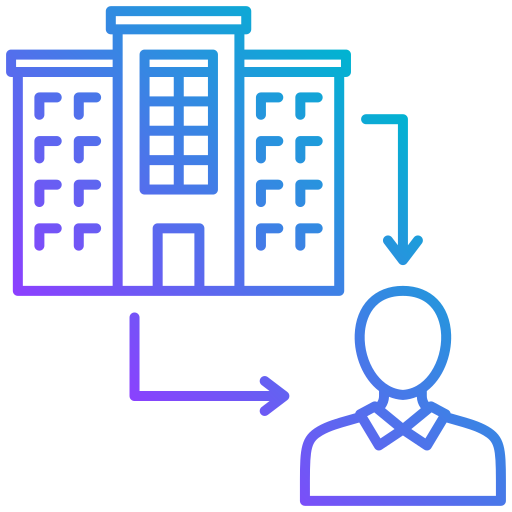Random Digit Dialing, or RDD, is a method used to gather information through telephone surveys. It helps researchers collect data from a wide range of people across Europe. By randomly selecting phone numbers, RDD ensures that the sample represents different groups in society.
RDD is significant for market research and opinion polling.
It allows us to reach people on both landlines and cell phones. This method helps improve response rates and provides accurate information. Understanding RDD telephone samples is necessary for anyone interested in survey methodology and data collection.
As we explore RDD further, we will look at how this sampling technique works and its impact on survey results.
Overview of RDD Telephone Sampling
RDD telephone sampling is a powerful tool for gathering data in Europe. It allows us to collect information from a variety of people by randomly dialing phone numbers. This method is critical for conducting telephone surveys that accurately reflect the population.
By using RDD, we can reach both landline and mobile users, which is necessary in today’s world where many people only use cell phones.
One challenge we face with RDD is the presence of non-working numbers. About 40% of cell phone numbers in RDD samples may not connect. This can make surveys more expensive and time-consuming.
To tackle this, we can use technologies like HLR Lookup. This service helps identify non-working numbers before making calls, saving time and resources.
Understanding RDD telephone sampling is critical for effective data collection. It helps improve response rates and ensures that survey results are reliable.
As we explore into deeper into this topic, we will define RDD telephone sampling and explore its significance in survey methodology.
Definition of RDD Telephone Sampling
RDD Telephone Sampling is a method we use to collect data through phone calls. It stands for Random Digit Dialing. This technique allows us to randomly select phone numbers from a list, ensuring that we reach a diverse group of people.
By using RDD, we can gather opinions and information from both landline and mobile users across the Europe region.
In our research, RDD helps improve the quality of telephone survey samples. It ensures that the data we collect is representative of the entire population. This is critical for accurate data analysis and effective market research.
As we continue to explore RDD, we will discuss its significance in enhancing response rates and the in general effectiveness of survey methodology. For more insights on sampling techniques, we can refer to telephone sample quality and its impact on research.
Importance of RDD Telephone Sampling in Research Data Collection
The importance of RDD telephone sampling in research data collection cannot be overstated. This method allows us to gather data from a diverse population across Europe. By using random digit dialing, we can reach individuals on both landlines and cell phones. This broad reach helps us achieve more accurate and representative telephone survey samples.
Also, RDD sampling enhances our ability to analyze data effectively. It improves response rates and reduces bias in our findings. For instance, when we conduct phone interviews, we can make sure that different demographics are included. This is critical for market research and understanding public opinion. As we continue our exploration of RDD, we will explore into into the different types of RDD telephone sampling techniques that researchers can employ.
For further insights on sampling methods, we recommend checking out this sampling guide.
Types of RDD Telephone Sampling
When we talk about RDD telephone sampling, we refer to different ways we can gather data. Each type has its own strengths and challenges. For example, we can use RDD to reach people on both landlines and cell phones.
This is significant since many people now only use cell phones. By using different sampling techniques, we can make sure our data is diverse and representative.
One common method is to use a dual-frame approach. This means we sample from both landline and mobile numbers.
This approach helps us reach a wider audience. But, it also comes with challenges. For instance, about 40% of cell phone numbers in RDD samples may not connect.
This can lead to higher costs and longer survey times. To improve efficiency, we can use services like HLR Lookup to filter out non-working numbers before making calls.
As we explore these types of RDD sampling, we can see how they impact our in general research. Each method plays a role in enhancing our data collection process.
Understanding these techniques will help us improve our telephone survey research. Next, we will look precisely at landline RDD sampling and its unique features.
Landline RDD Sampling
Landline RDD sampling is a key method in our data collection efforts. It allows us to reach households that still rely on traditional landline telephones.
By using Random Digit Dialing, we can randomly select numbers from the entire range of landline numbers. This helps make sure that our sample is representative of the population in the Europe region.
One challenge we face with landline RDD sampling is the increasing number of households that no longer have landlines. As more people switch to mobile phones, it becomes harder to gather data from this group.
But, landline RDD remains valuable for reaching specific demographics that may still use landlines. For instance, older adults are more likely to have a landline, making this method necessary for understanding their opinions and needs.
In our research, we combine landline RDD sampling with mobile RDD sampling to create a complete approach. This dual strategy enhances our ability to collect diverse data and improve response rates.
As we move forward, we will explore mobile RDD sampling and its unique advantages in our data collection efforts. For more information on the importance of sampling techniques, we can refer to our sampling guide.
Mobile RDD Sampling
Mobile RDD Sampling is a critical aspect of our research methodology. It allows us to reach individuals who primarily use cell phones.
This is significant since many people no longer have landlines. By using Random Digit Dialing for mobile numbers, we can gather data that reflects current communication trends.
But, mobile RDD sampling presents unique challenges. A significant portion of mobile numbers may be non-working, which can inflate costs and extend the time needed for surveys.
To address this, we use HLR Lookup technology. This service helps us identify non-working numbers before making calls, ensuring our resources are used efficiently.
Incorporating mobile RDD sampling into our research enhances the quality of our telephone survey samples. It allows us to collect data from a broader demographic, improving the in general accuracy of our data analysis.
As we continue to refine our sampling techniques, we will explore the benefits of dual-frame RDD sampling, which combines both landline and mobile approaches for even greater reach.
Dual-Frame RDD Sampling
Dual-Frame RDD Sampling is an necessary method in our data collection toolkit. It combines both landline and cell phone samples to make sure we reach a broader audience. This approach is particularly valuable as many individuals now rely solely on their cell phones. By using dual-frame sampling, we can improve our telephone survey results and improve the representativeness of our data.
One significant advantage of dual-frame RDD sampling is its ability to address the challenges posed by the growing number of cell phone-only households. This method allows us to collect data from a diverse range of respondents, which is critical for accurate data analysis. Also, it helps us achieve higher response rates and reduces the risk of bias in our findings. As we do this sampling technique, we must also consider the implications for our survey methodology and make sure that we maintain high standards of quality.
As we explore the intricacies of dual-frame RDD sampling, we will also encounter challenges that require our attention. For example, the presence of non-working numbers can complicate our efforts. To lessen these issues, we can use technologies like HLR Lookup to identify non-working numbers before making calls. This proactive approach will help us streamline our data collection process and improve the in general effectiveness of our research.
Challenges in RDD Telephone Sampling
When we conduct RDD telephone sampling, we face some significant challenges. One major issue is the high number of non-working numbers in our samples. This can happen since many people change their phone numbers often or stop using their phones altogether.
Therefore, we may spend time and resources calling numbers that do not connect. This can lead to increased costs and longer survey times.
Another challenge is the difficulty in identifying whether a number is eligible for contact. Sometimes, we receive unclear messages when we try to call.
For example, we might hear that the subscriber is not accepting calls or that the number is barred. These messages make it hard to know if we should keep trying to reach that number. To improve our efficiency, we can use services like HLR Lookup.
This technology helps us identify non-working numbers before we make calls, saving us time and effort.
As we continue to refine our survey methodology, we must address these challenges. By focusing on improving our sampling techniques, we can improve the quality of our data collection. This will in the end lead to better results in our telephone survey research.
Next, we will explore how non-working numbers precisely impact our cell phone samples.
Non-Working Numbers in Cell Phone Samples
In our exploration of RDD telephone sampling, we encounter a significant challenge: non-working numbers in cell phone samples. Approximately 40% of cell phone numbers in these samples may not connect. This high rate of non-working numbers can lead to increased costs and longer survey durations.
To tackle this issue, we can employ services like HLR Lookup. This technology allows us to identify non-working numbers before making calls, enhancing our efficiency.
Using HLR Lookup helps us streamline our data collection process. It provides valuable insights into the status of phone numbers, allowing us to focus our efforts on valid contacts.
By reducing the number of non-working numbers, we can improve our in general response rates. This is critical for ensuring that our telephone survey samples accurately represent the population in the Europe region.
As we address the challenge of non-working numbers, we also prepare for the next step in our research. Understanding how to effectively manage these numbers will improve our data accuracy and improve our survey methodology.
By refining our approach, we can make sure that our findings are both reliable and relevant.
Response Rates and Data Accuracy
In our experience with RDD telephone sampling, we recognize that achieving high response rates is critical for reliable data. The challenge lies in the fact that a significant portion of mobile numbers may be non-working. This issue can inflate costs and prolong the time needed for surveys. By utilizing technologies like HLR Lookup, we can identify non-working numbers before making calls, so improving our efficiency.
Also, the accuracy of our data is directly linked to the quality of our samples. When we combine landline and mobile numbers, we create a more complete view of the population. This dual-frame approach enhances our data collection efforts and helps us reach diverse demographics. As we gather data, we must also focus on maintaining the integrity of our survey methodology to make sure that our findings are both valid and reliable.
As we continue to refine our techniques, we will explore best practices for RDD telephone sampling. These practices will further improve our ability to gather accurate data while addressing the challenges we face in the telecom industry. By focusing on effective strategies, we can improve our in general research outcomes and make sure that our telephone survey samples meet the highest standards.
Best Practices for RDD Telephone Sampling
To improve our RDD telephone sampling, we must follow some significant best practices. Initial, we should always use a reliable method to select our samples. This helps us reach a wide range of people.
For example, combining landline and mobile numbers can give us a better view of the population.
Next, we need to focus on reducing the number of non-working numbers. Using services like HLR Lookup can help us identify these numbers before we make calls. This saves time and money while improving our response rates.
At last, we should regularly review our survey methodology.
This ensures we are using the best techniques for data collection. By refining our approach, we can improve the quality of our findings. As we do these best practices, we will be better prepared to explore advanced techniques in Random Digit Dialing.
Utilizing Random Digit Dialing Techniques
We use Random Digit Dialing (RDD) techniques to improve our telephone survey samples in Europe.
This method allows us to randomly select phone numbers, ensuring a diverse representation of the population. By using RDD, we can reach both landline and mobile users, which is necessary for accurate data collection.
One of the key advantages of RDD is its cost-effectiveness. It helps us generate a representative sample without relying solely on existing telecom lists.
But, we must remain vigilant about the challenge of non-working numbers, which can inflate costs and extend survey durations. To combat this, we can do services like HLR Lookup to identify non-working numbers before making calls.
As we refine our RDD techniques, we also prepare to do quality control measures. These measures will help us maintain the integrity of our survey methodology and make sure that our findings are both reliable and valid.
By focusing on quality, we can improve our in general research outcomes and address the challenges natural in the telecom industry.
Implementing Quality Control Measures
To make sure the quality of our RDD telephone samples, we must do strict quality control measures. These measures help us identify and eliminate errors in our data collection process. For instance, we regularly review our sampling techniques and adjust them based on feedback and results.
This way, we can maintain high standards in our telephone survey research.
We also conduct regular training for our interviewers. This training focuses on effective communication and accurate data recording. By equipping our team with the right skills, we can improve the quality of phone interviews.
Plus, we monitor call attempts to make sure that interviewers are following best practices. This helps us maintain consistency and reliability in our findings.
As we strengthen our quality control measures, we also prepare to address significant aspects of our research. Ensuring data privacy and compliance is necessary for maintaining trust with our participants.
By focusing on quality and ethical standards, we can improve the in general effectiveness of our survey methodology and the integrity of our results.
Ensuring Data Privacy and Compliance
When we conduct RDD telephone sampling, we prioritize data privacy and compliance with regulations. It is necessary to protect the personal information of participants. We follow strict guidelines to make sure that all data collected is handled securely. This includes anonymizing responses and limiting access to sensitive information.
Compliance with laws, such as the General Data Protection Regulation (GDPR) in Europe, is critical. We make sure that participants are informed about how their data will be used. This transparency builds trust and encourages participation in our telephone surveys. By adhering to these regulations, we improve the credibility of our research.
As we continue to refine our survey methodology, we remain committed to maintaining high standards of data collection. This focus on privacy and compliance will support our efforts in gathering accurate and representative samples. In the following section, we will explore the different applications of RDD telephone sampling in Europe.
Applications of RDD Telephone Sampling in Europe
We see many significant applications of RDD telephone sampling in Europe. This method helps us gather data for different studies, including political polling and opinion surveys. By randomly selecting phone numbers, we can reach a wide range of people.
This diversity is necessary for understanding public opinions and trends.
In Europe, RDD sampling is particularly useful for market research. Companies use this method to learn about consumer preferences and behaviors. By conducting telephone interviews, businesses can collect valuable insights that guide their strategies.
This approach helps them stay competitive in a changing market.
Also, RDD sampling supports statistical analysis in different fields. Researchers can analyze data to identify patterns and make well-informed choices. This method enhances the quality of data collection and ensures that findings are representative of the population.
As we explore these applications, we prepare to explore into into the role of RDD in political polling and opinion surveys.
Political Polling and Opinion Surveys
In our work with political polling and opinion surveys, we rely heavily on RDD telephone samples. This method allows us to gather diverse opinions from a wide range of people. By randomly dialing numbers, we can include voices from different demographics, ensuring our results reflect the population accurately.
Using RDD enhances our ability to conduct effective telephone surveys.
It helps us reach both landline and mobile users, which is critical for understanding public sentiment. But, we must be mindful of the challenges, such as the presence of non-working numbers that can affect our response rates. To tackle this, we use advanced techniques like HLR Lookup to filter out these numbers before making calls.
As we move forward, we will continue to refine our survey methodology to improve the quality of our findings.
This focus on quality is necessary as we prepare to explore the applications of RDD in areas such as healthcare and social research. By maintaining high standards in our polling efforts, we contribute to good choice-making in our communities.
Healthcare and Social Research
In our work on healthcare and social research, we rely heavily on RDD telephone samples. This method allows us to gather significant data from a wide range of individuals. By reaching both landline and mobile users, we make sure that our findings reflect the diverse needs of the population.
Using RDD helps us conduct effective telephone surveys that inform public health policies and social programs. For example, we can assess community health needs or gather opinions on healthcare services. This data is critical for making well-informed choices that impact people’s lives.
As we continue to improve our survey methodology, we recognize the importance of accurate data collection. Our commitment to quality ensures that we can provide reliable insights into healthcare and social issues. This focus will guide us as we prepare in summary our findings and their implications.
Summing up
RDD telephone samples play a critical role in gathering data across Europe. They help us conduct surveys that reflect the opinions and behaviors of diverse populations. This method is cost-effective and allows us to reach both landline and mobile users, which is necessary for accurate results.
As we continue to refine our techniques, we face challenges like non-working numbers. But, we use advanced methods to improve our response rates and data quality. Our commitment to high standards ensures that our findings are reliable and useful for decision-making.
Looking ahead, we will build on our successes in RDD sampling. This will help us address different research needs and contribute to informed policies in Europe. We are excited to see how RDD continues to shape our understanding of public opinion and market
Carsten Broich
Carsten is the founder of Sample Solutions and Lifepanel with over a decade of sampling and social research experience. A trained aerospace engineer who discovered his love for random phone numbers.






